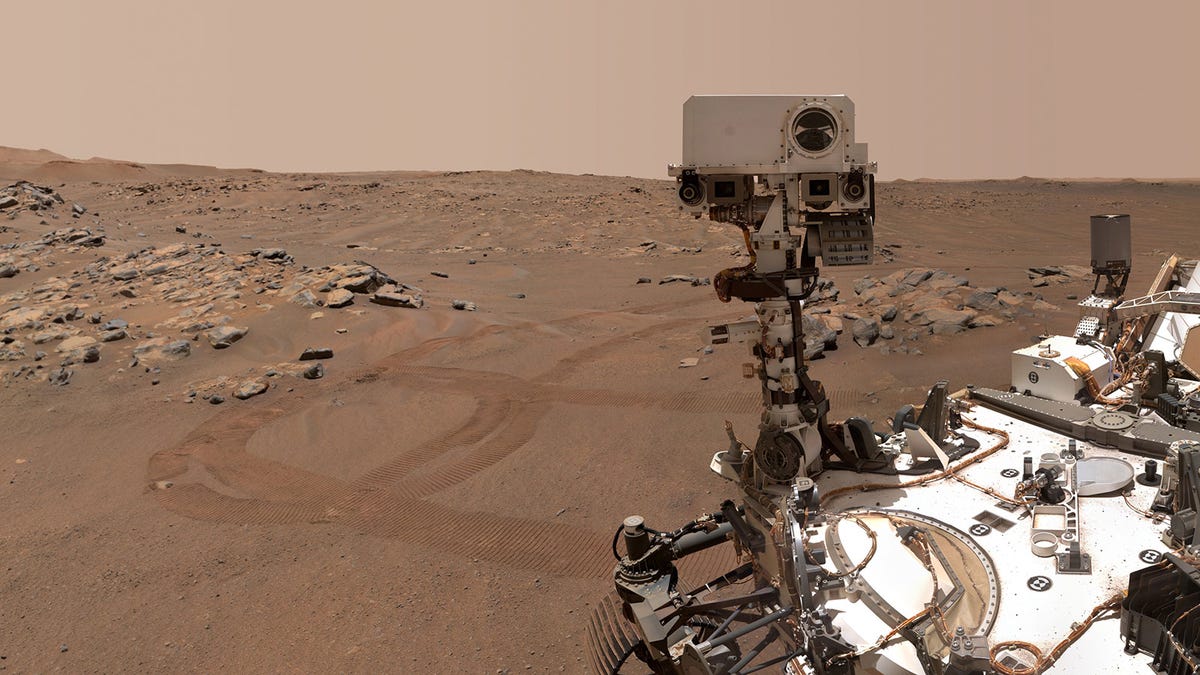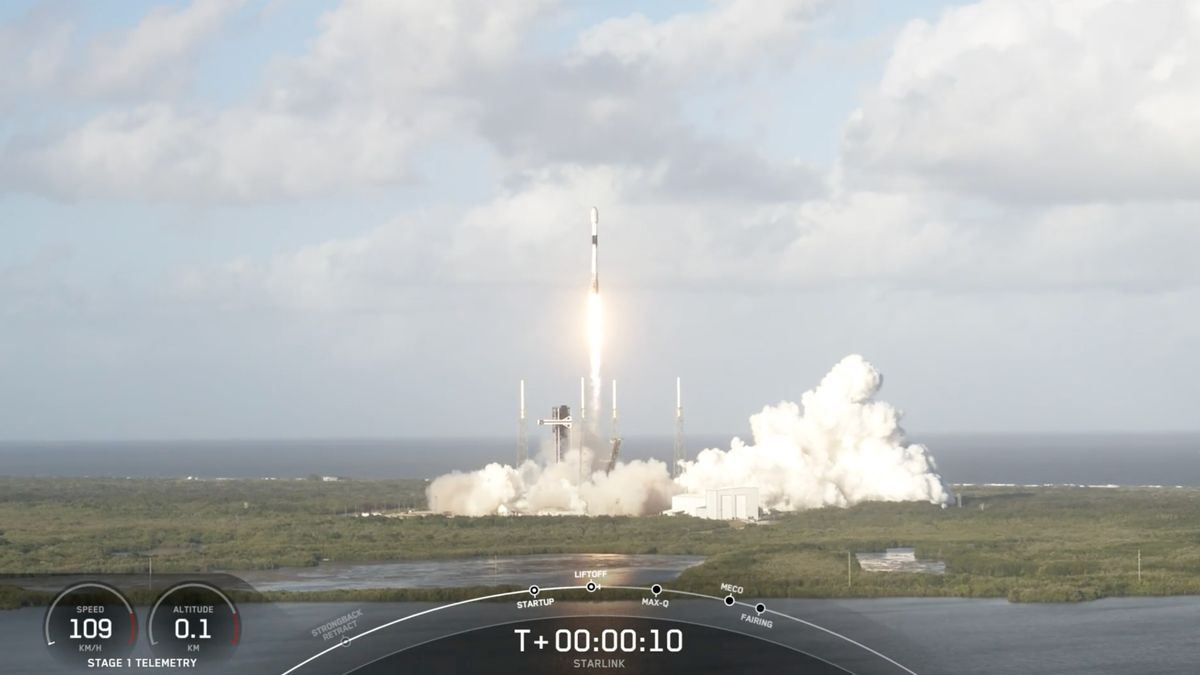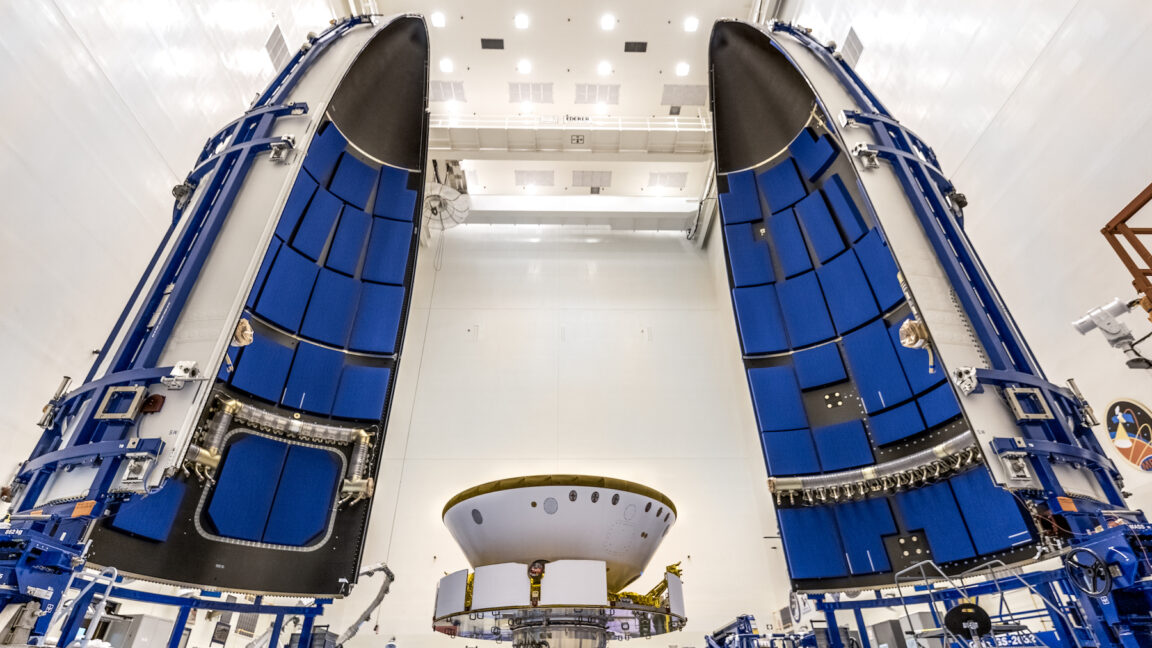

Met behulp van een microfoon, een laser en wat innovatieve wiskunde heeft een team van wetenschappers de snelheid van het geluid op Mars gemeten, in de eerste wetenschappelijke en een andere opmerkelijke ontdekking gedaan door NASA’s Perseverance-rover.
Er is veel liefde voor de volhardingsmissie, maar een van mijn favoriete aspecten van de rover is dat hij audio kan opnemen. Begin vorig jaar konden we voor het eerst ooit geluiden op Mars horen, zowel natuurlijke als kunstmatige. met behulp van bestand SuperCam Microfoonrondreizende geregistreerd Marswinden waaien, klikken Van lasers die rotsen scannen en de schurende geluiden van hun draaiende wielen.
De volhardingsmicrofoon die deze geluiden zou detecteren was niet zeker, Kijkend naar de pijnlijk dunne atmosfeer op de rode planeet. Geluid heeft een medium nodig om zich voort te planten, en Mars heeft een kleine atmosferische druk van 0,095 pond per vierkante inch (psi) Op grondniveau biedt het niet veel om mee te werken. Ter vergelijking: de atmosferische druk op zeeniveau op aarde is ongeveer 14,7 psi.
Maar ze waren erOnmerkbaar geluid Opgepikt door Percy’s microfoon in Jezero’s krater. Met geluiden die duidelijk te horen zijn op Mars, Baptiste Shane van Los Alamos National Laboratory in Los Angeles en leeftijdsgenoten zij was In staat om de geluidssnelheid op Mars te meten. Wetenschappers onlangs geïntroduceerd de bevindingen In de 53e Planetaire en Lunar Wetenschapsconferentiedie van 7-11 maart in Texas werd gehouden.
De een team de hijskraan SuperCam’s Perseverance Experiment, dat met een laser van rotsen schiet om de geologie van Mars te bestuderen en Het bevindt zich aan de kop van de mast van de sonde, 6,9 voet (2,1 m) boven het oppervlak van Mars. Het team nam metingen van 150 laseropnamen die op vijf verschillende locaties zijn gemaakt, terwijl ze ook de lokale weersomstandigheden volgden.
G/O Media krijgt mogelijk commissie

Up to $1,500 off
Samsung Neo QLED TV 4K (2021)
Quantum Matrix Technology
Experience this brilliantly intense picture powered by a vast array of tiny light cells using exclusive Mini LED designed technology for hyper-focused brightness and dimming in all the right areas.
By measuring the time it took the staccato-like clicking sounds to reach the SuperCam microphone, they were able to establish the speed of sound on Mars, to a precision of plus-minus 0.51%. They found that sound on Mars travels at 787 feet per second (240 meters per second), which is significantly slower than the sound of speed on Earth at 1,115 feet per second (340 m/s).
And in an observation that matched prior predictions, the speed of sounds below 240 hertz fell to 754 feet per second (230 m/s). That doesn’t happen on Earth, as sounds within the audible bandwidth (20 Hz to 20 kHz) travel at a constant speed. The “Mars idiosyncrasy,” as the scientists call it, has to do with the “unique properties of the carbon dioxide molecules at low pressure,” which makes the Martian atmosphere the only one in the solar system to experience “a change in speed of sound right in the middle of the audible bandwidth,” as the scientists wrote. The reason for this is that sounds above 240 Hz don’t have time to relax their energy, according to the scientists.
The scientists go on to say that this acoustic effect “may induce a unique listening experience on Mars with an early arrival of high-pitched sounds compared to bass.”
Unique is right! Lots of acoustic information exists below 240 Hz, including the low end of music and the lowermost registers of the human voice (typically for males). Music on Mars would sound completely messed up (particularly with increased distance), with the middle and high frequencies reaching the listener slightly before the low frequency sounds, such as the lower registers of the bass guitar and kick drum. Add another effect of carbon dioxide, the attenuating, or dampening, of higher frequencies, and the acoustic experience gets even weirder.
As a neat aside, the technique used to measure the speed of sound can also be used to measure the local temperature. So in addition to Percy’s Mars-omgevingsdynamica-analysator (MEDA) beschikt het team over een nieuwe thermometer. Vooruitkijkend zullen Chide en zijn collega’s meer tests uitvoeren om de geluidssnelheid op verschillende tijdstippen van de dag en tijdens verschillende Marsseizoenen te meten.

‘Webgeek. Wannabe-denker. Lezer. Freelance reisevangelist. Liefhebber van popcultuur. Gecertificeerde muziekwetenschapper.’






